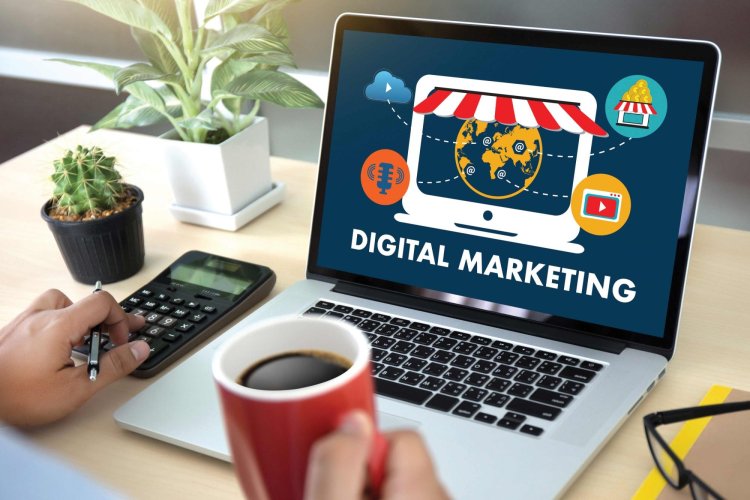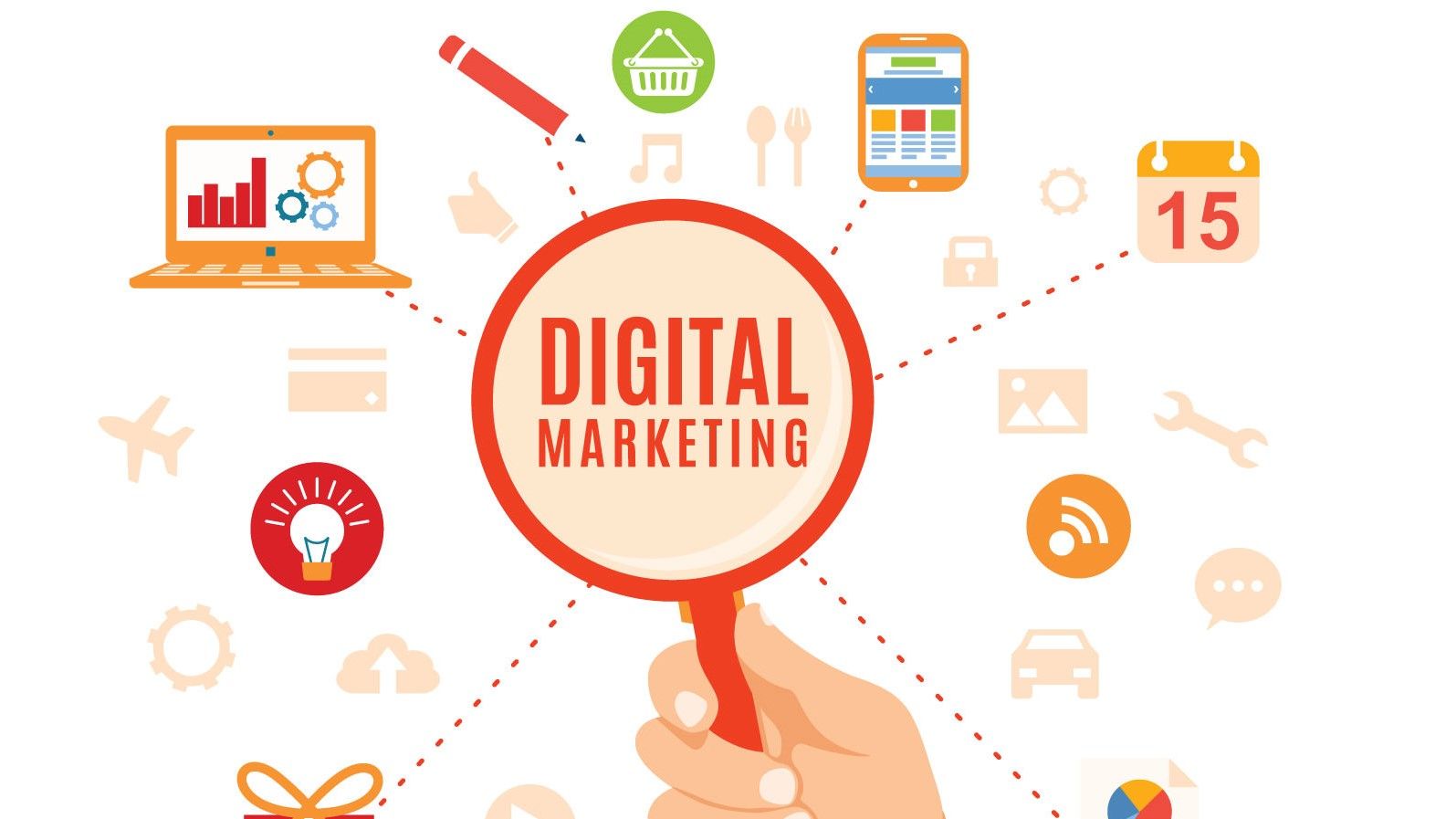Types of Digital Marketing Services: A Complete Guide for Businesses
This blog explores the most effective types of digital marketing services, their benefits, and how businesses can use them to maximize their online reach.

Introduction
In today’s digital era, businesses must leverage multiple online marketing strategies to stay ahead. Digital marketing is a broad term encompassing various services that help brands increase their online presence, generate leads, and drive sales. Whether you are a startup or a well-established company, understanding the different types of digital marketing services can help you choose the right strategy for your business.
This blog explores the most effective types of digital marketing services, their benefits, and how businesses can use them to maximize their online reach.
1. Search Engine Optimization (SEO)
SEO is the foundation of digital marketing. It involves optimizing your website to rank higher on search engines like Google and Bing. The goal is to improve organic traffic and make your business more discoverable online.
Key Components of SEO
- On-Page SEO – Optimizing content, meta tags, keywords, and internal linking.
- Off-Page SEO – Building backlinks, social signals, and brand mentions.
- Technical SEO – Enhancing website speed, mobile-friendliness, and structured data.
- Local SEO – Optimizing for local searches and Google My Business listings.
Benefits:
- Increases website visibility and credibility.
- Drives organic traffic without paying for ads.
- Provides long-term growth opportunities.
2. Pay-Per-Click Advertising (PPC)
PPC advertising allows businesses to display ads on search engines, social media, and other digital platforms. You pay only when users click on your ad.
Popular PPC Platforms
- Google Ads – Search, Display, and Shopping ads.
- Facebook & Instagram Ads – Highly targeted social media ads.
- LinkedIn Ads – B2B advertising for professionals.
- YouTube Ads – Video ads for brand awareness.
Benefits:
- Instant traffic and lead generation.
- Allows precise targeting based on demographics, interests, and behavior.
- Provides measurable results with detailed analytics.
3. Social Media Marketing (SMM)
Social media marketing involves promoting your brand on platforms like Facebook, Instagram, Twitter, LinkedIn, and Pinterest to engage with audiences and build brand awareness.
Key Aspects of SMM
- Creating engaging posts, stories, and reels.
- Running paid social media campaigns.
- Engaging with followers through comments and messages.
- Using influencer collaborations for brand promotion.
Benefits:
- Increases brand visibility and engagement.
- Builds customer loyalty and trust.
- Drives website traffic and conversions.
4. Content Marketing
Content marketing focuses on creating valuable, informative, and engaging content to attract and retain an audience. It includes blog posts, articles, videos, infographics, and more.
Popular Content Marketing Strategies
- Blogging – Writing SEO-friendly blog posts.
- Video Marketing – Creating tutorials, reviews, and promotional videos.
- Infographics – Visual representations of data and insights.
- E-books & Whitepapers – In-depth industry reports and guides.

Benefits:
- Boosts SEO and website traffic.
- Establishes your brand as an authority.
- Nurtures leads and improves conversions.
5. Email Marketing
Email marketing remains one of the most effective digital marketing services. It involves sending targeted emails to leads and customers to drive engagement and sales.
Types of Email Marketing Campaigns
- Newsletters – Regular updates about products and services.
- Promotional Emails – Discounts, offers, and limited-time deals.
- Automated Sequences – Drip campaigns for nurturing leads.
- Re-engagement Emails – Targeting inactive customers.
Benefits:
- High ROI compared to other digital marketing channels.
- Personalized communication with customers.
- Strengthens customer relationships.
6. Affiliate Marketing
Affiliate marketing involves partnering with affiliates who promote your products or services in exchange for a commission on each sale they generate.
How It Works
- Businesses provide unique referral links to affiliates.
- Affiliates promote the product through blogs, videos, or social media.
- Businesses pay affiliates based on sales, clicks, or leads.
Benefits:
- Low-risk marketing model.
- Expands brand reach through third-party promotions.
- Performance-based, ensuring a high ROI.
7. Influencer Marketing
Influencer marketing involves collaborating with social media influencers to promote products or services. Influencers have a loyal audience that trusts their recommendations.
Types of Influencers
- Mega Influencers – Celebrities with millions of followers.
- Macro Influencers – Influencers with 100K–1M followers.
- Micro-Influencers – 10K–100K followers, more niche-specific.
- Nano Influencers – Below 10K followers, highly engaged audience.
Benefits:
- Builds trust and credibility.
- Increases brand awareness and engagement.
- Boosts conversions with authentic recommendations.
8. Conversion Rate Optimization (CRO)
CRO focuses on improving a website’s user experience to increase the percentage of visitors who take the desired action, such as making a purchase or signing up for a newsletter.
CRO Strategies
- Optimizing landing pages for better conversions.
- A/B testing different elements like CTA buttons and headlines.
- Enhancing website design and speed.
Benefits:
- Maximizes revenue from existing traffic.
- Improves user experience and engagement.
- Reduces bounce rate and increases sales.
9. Online Reputation Management (ORM)
ORM helps businesses maintain a positive online image by managing reviews, responding to customer feedback, and addressing negative publicity.
Key ORM Activities
- Monitoring brand mentions across the web.
- Handling negative reviews effectively.
- Encouraging satisfied customers to leave positive feedback.
Benefits:
- Protects brand reputation.
- Increases customer trust and credibility.
- Enhances customer relationships.
10. Video Marketing
Video marketing is an essential digital marketing service that leverages videos to promote products, services, and brand messages.
Popular Video Marketing Channels
- YouTube – The second-largest search engine after Google.
- Instagram Reels & TikTok – Short-form, engaging video content.
- Facebook & LinkedIn Videos – Professional and promotional videos.
Benefits:
- Increases engagement and brand awareness.
- Encourages higher retention rates.
- Drives conversions effectively.
11. Mobile Marketing
Mobile marketing focuses on reaching users through mobile devices using SMS, app notifications, and mobile-friendly websites.
Common Mobile Marketing Strategies
- SMS and WhatsApp marketing.
- Mobile-friendly website design.
- In-app advertising and push notifications.
Benefits:
- Direct and personalized communication with users.
- Higher engagement rates.
- Effective for location-based marketing.
12. Voice Search Optimization
With the rise of voice assistants like Alexa, Siri, and Google Assistant, optimizing for voice search is crucial for digital marketing success.
Voice Search Optimization Strategies
- Using conversational keywords.
- Creating FAQ-based content.
- Optimizing for local searches.
Benefits:
- Enhances user experience.
- Improves local SEO rankings.
- Adapts to the growing trend of voice search.
Conclusion
Digital marketing offers a wide range of services to help businesses reach their target audience, generate leads, and boost sales. Whether it’s SEO, PPC, social media marketing, content marketing, email campaigns, or influencer partnerships, choosing the right combination of digital marketing services can drive success.
To stay ahead in the competitive digital landscape, businesses must continuously adapt, experiment, and optimize their marketing strategies based on data and trends.
If you’re looking to enhance your digital presence, investing in a mix of these digital marketing services will help you achieve long-term success.
Click Here to Read More Articles
What's Your Reaction?

















.jpg)